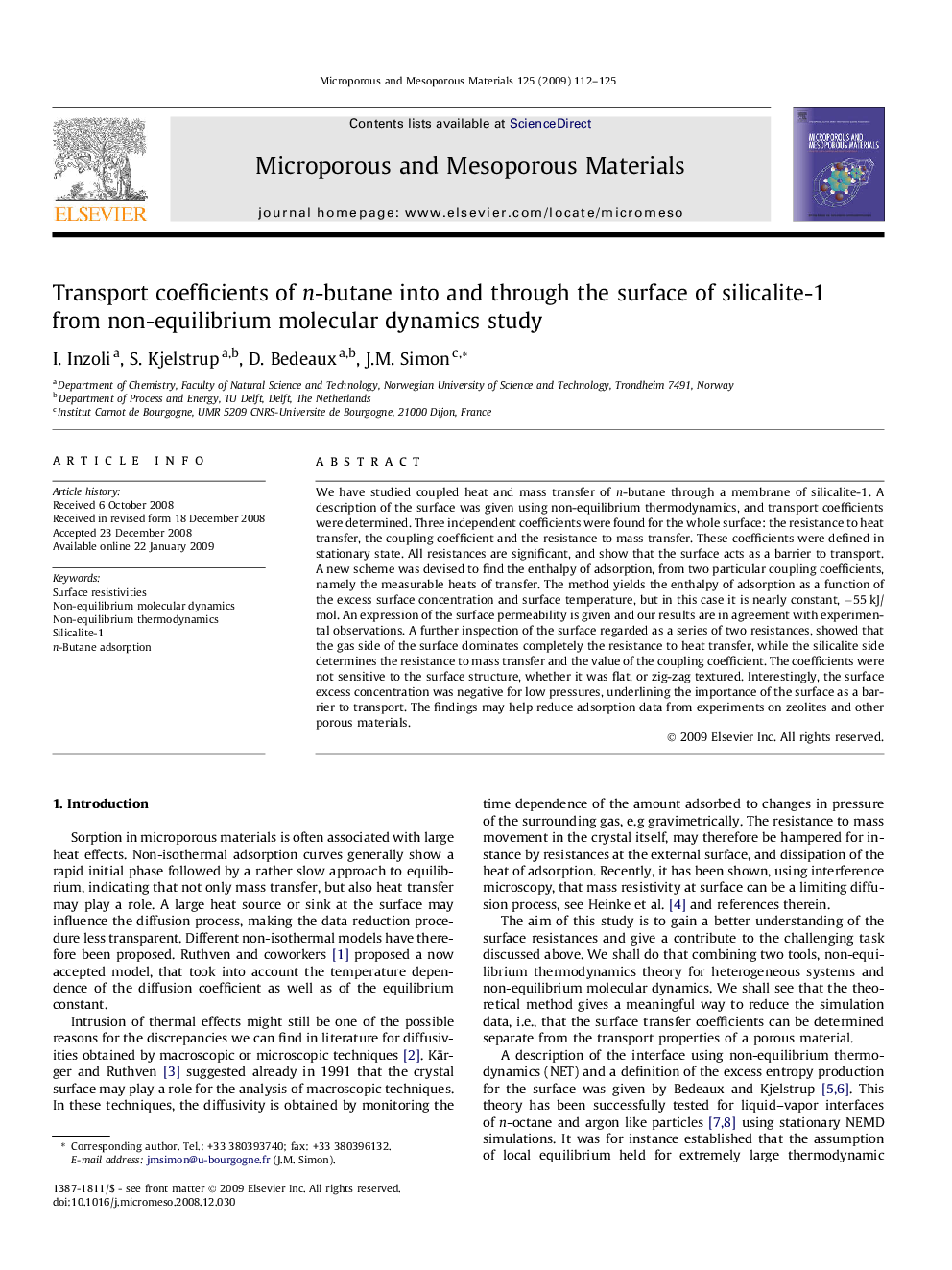| Article ID | Journal | Published Year | Pages | File Type |
|---|---|---|---|---|
| 75912 | Microporous and Mesoporous Materials | 2009 | 14 Pages |
We have studied coupled heat and mass transfer of n-butane through a membrane of silicalite-1. A description of the surface was given using non-equilibrium thermodynamics, and transport coefficients were determined. Three independent coefficients were found for the whole surface: the resistance to heat transfer, the coupling coefficient and the resistance to mass transfer. These coefficients were defined in stationary state. All resistances are significant, and show that the surface acts as a barrier to transport. A new scheme was devised to find the enthalpy of adsorption, from two particular coupling coefficients, namely the measurable heats of transfer. The method yields the enthalpy of adsorption as a function of the excess surface concentration and surface temperature, but in this case it is nearly constant, −55 kJ/mol. An expression of the surface permeability is given and our results are in agreement with experimental observations. A further inspection of the surface regarded as a series of two resistances, showed that the gas side of the surface dominates completely the resistance to heat transfer, while the silicalite side determines the resistance to mass transfer and the value of the coupling coefficient. The coefficients were not sensitive to the surface structure, whether it was flat, or zig-zag textured. Interestingly, the surface excess concentration was negative for low pressures, underlining the importance of the surface as a barrier to transport. The findings may help reduce adsorption data from experiments on zeolites and other porous materials.
